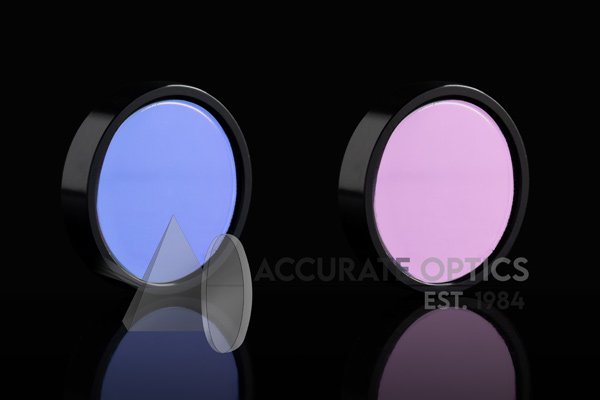What Are The Different Types of Dielectric Coated Mirrors?
Mirrors have been captivating humanity for centuries, reflecting not just our physical appearance but also our sense of wonder and curiosity. The classic silvered glass mirrors have adorned our homes and become symbols of self-reflection and beauty. But beyond the silver surface lies a world of advanced optical technology, where dielectric coated mirrors are making waves with their remarkable characteristics and applications. In this blog post, we’ll venture into the world of dielectric coated mirrors and explore the fascinating types that have transformed the way we manipulate and interact with light.
Understanding Dielectric Coated Mirrors
Unlike conventional mirrors that use a layer of metal, dielectric coated mirrors utilize a stack of dielectric thin films to achieve their reflective properties. Dielectric materials are characterized by their high transparency and low absorption of light, making them ideal for optical applications. The thin film coating is carefully engineered to enhance reflection at specific wavelengths while minimizing reflection at others. This precise control over reflection allows dielectric coated mirrors to be tailored for various uses in diverse industries.
Types of Dielectric Coated Mirrors
- Enhanced Aluminum Mirrors: These mirrors utilize a dielectric coating on top of an aluminum substrate to improve their performance and durability. Enhanced aluminum mirrors offer excellent reflectivity across a broad spectrum, making them ideal for applications in spectroscopy, laser systems, and optical instruments.
- Protected Silver Mirrors: Combining the advantages of silver and dielectric coatings, protected silver mirrors offer high reflectivity in the visible and near-infrared regions. The dielectric layer protects the silver coating from tarnishing and ensures long-lasting optical performance, making them popular in applications such as microscopy and laser cavities.
- Broadband Dielectric Mirrors: Broadband dielectric mirrors are engineered to provide high reflectivity over a wide range of wavelengths. Their versatile performance across various frequencies makes them suitable for laser systems, telecommunications, and multi-color imaging applications.
- Ultrafast Laser Mirrors: These specialized mirrors are designed to handle ultrashort laser pulses without compromising beam quality. They possess high damage thresholds and minimal group delay dispersion, ensuring precise pulse reflection in ultrafast laser applications.
- Dichroic Mirrors: Dichroic mirrors are designed to transmit one wavelength range while reflecting another. They are commonly used in fluorescence microscopy, separating excitation and emission wavelengths for optimal image contrast.
- Beam Splitter Mirrors: Dielectric coated beam splitter mirrors are instrumental in splitting an incident beam into two separate beams with specific reflectivity and transmittance ratios. They find applications in interferometry, laser systems, and beam shaping.
Applications of Dielectric Coated Mirrors
The versatility of dielectric coated mirrors extends to a myriad of applications:
– Laser Systems: Dielectric coated mirrors are integral components in laser cavities, providing high reflectivity and precise control over laser beam alignment.
– Imaging and Microscopy: In scientific imaging and microscopy, dielectric coated mirrors enable efficient beam routing, wavelength selection, and image enhancement.
– Spectroscopy: Dielectric coated mirrors play a crucial role in separating and reflecting specific wavelengths for precise spectroscopic analysis.
– Optical Communications: In telecommunications, dielectric coated mirrors are used in fiber optic systems to manipulate and steer optical signals.
– Solar Energy: Dielectric coated mirrors are utilized in solar concentrators to focus and direct sunlight for more efficient energy collection.
Innovations and Advancements
The field of dielectric coated mirrors continues to evolve with constant advancements in materials science and coating technologies. Research is focused on improving performance metrics such as reflectivity, durability, and thermal stability. Additionally, efforts are being made to extend the capabilities of dielectric coated mirrors to new wavelengths and applications, driving innovation across industries.
Conclusion
Beyond the silver surface of traditional mirrors, the realm of dielectric coated mirrors offers a rich tapestry of optical possibilities. These advanced mirrors, crafted with precision and engineering, empower scientists, engineers, and researchers to manipulate light in ways that were once considered impossible. From lasers to spectroscopy, microscopy to telecommunications, the fascinating types of dielectric coated mirrors have transformed the landscape of modern optics. As technology continues to advance, we can anticipate even more groundbreaking discoveries and applications, further enriching our understanding of light and its boundless potential.
Related Readings:
Dielectric-coated Focusing Mirrors for Optical Systems
High-Performance Dielectric Mirrors in Fluorescence Imaging
FAQs on Different Types of Dielectric Coated Mirrors
1. What are dielectric coated mirrors and their purpose?
Dielectric coated mirrors have thin layers of dielectric materials applied to their surfaces, enhancing reflectivity and reducing losses.
2. How do protected aluminum mirrors differ from bare ones?
Protected aluminum mirrors have a dielectric layer on top of the aluminum coating, enhancing durability and reflectivity compared to bare aluminum.
3. What are enhanced silver mirrors used for?
Enhanced silver mirrors have dielectric layers on top of silver coatings, providing higher reflectivity across a broader wavelength range.
4. How do broadband dielectric mirrors differ from standard ones?
Broadband mirrors use multiple dielectric layers to achieve high reflectivity over a wide spectral range, compared to single-wavelength mirrors.
5. What are dichroic mirrors and their unique feature?
Dichroic mirrors are designed to reflect one wavelength while transmitting another, making them useful for separating and combining specific wavelengths.
6. Can dielectric mirrors withstand high-power laser applications?
Yes, high-power laser mirrors can be designed with robust coatings to handle the intensity and heat generated by lasers.
7. Can dielectric mirrors be used for ultrafast laser applications?
Yes, ultrafast mirrors are designed to minimize dispersion and maintain pulse integrity in applications involving ultrafast lasers.
8. How do dielectric mirrors benefit interferometry setups?
Dielectric mirrors with high reflectivity and low loss characteristics enhance the accuracy of interferometric measurements.
9. What’s the advantage of using dielectric mirrors in fluorescence microscopy?
Dielectric mirrors efficiently transmit the excitation wavelength and reflect the emission wavelength, improving fluorescence imaging quality.
10. Do dielectric mirrors require special care and cleaning?
Yes, using gentle cleaning methods and avoiding abrasive materials ensures the longevity and optical performance of dielectric mirrors.








